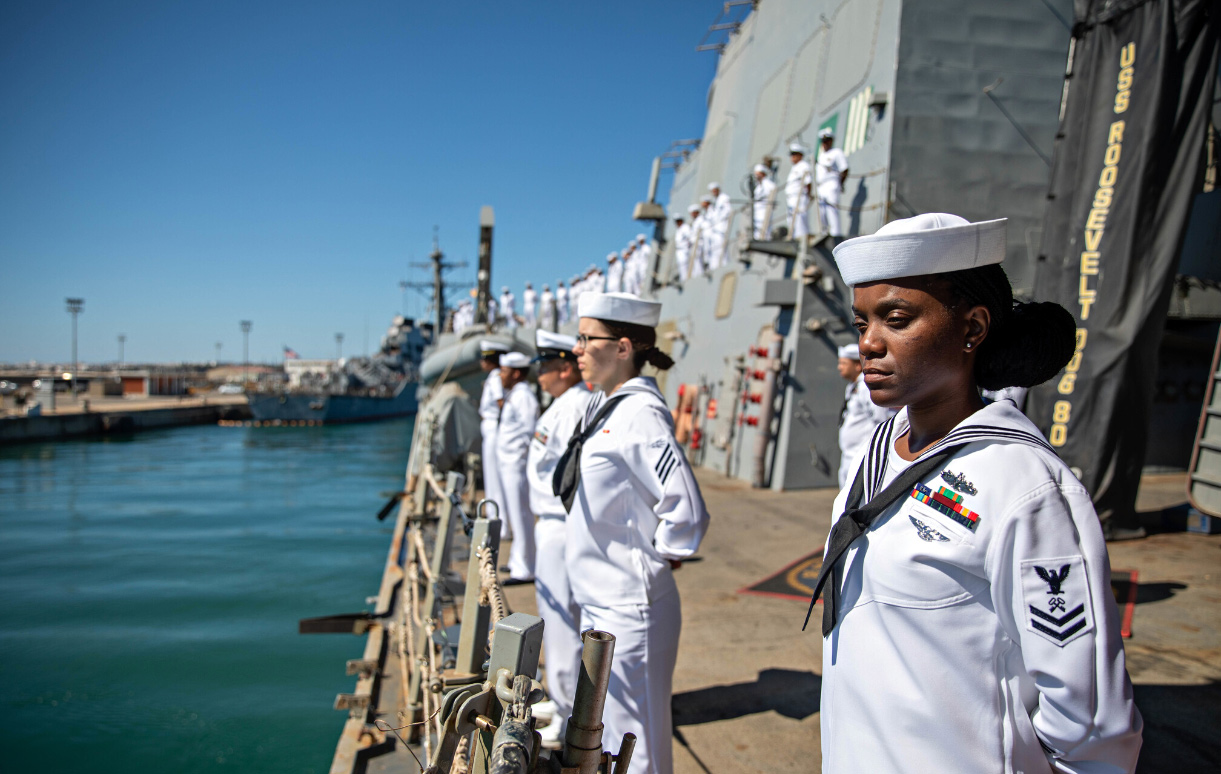
The Navy is an integral part of a country’s defense system and has a rich history filled with fascinating stories and achievements. In this article, we’ll dive deep into the world of the Navy and uncover 15 fun facts that will leave you amazed. From its inception to the modern-day, the Navy has played a crucial role in protecting maritime interests and projecting power across the seas. Get ready to learn about famous naval battles, impressive ship technologies, and even some quirky traditions that are unique to the Navy. Whether you have a keen interest in military history or simply enjoy discovering new and interesting tidbits, these fun facts about the Navy are sure to keep you engaged. So, prepare to set sail and embark on a journey through the captivating world of the Navy!
Key Takeaways:
- The Navy is a powerful and historic force with elite SEALs, advanced submarines, and exciting career opportunities. It plays a crucial role in global security and humanitarian aid efforts.
- From elite SEALs to advanced submarines, the Navy is a force to be reckoned with. It has a rich history, diverse career paths, and a commitment to global security and humanitarian aid.
The Navy has a long and storied history.
The United States Navy, established on October 13, 1775, is the naval warfare service branch of the U.S. Armed Forces. With a rich legacy dating back over two centuries, the Navy has played a pivotal role in shaping the nation’s maritime power.
The Navy is the largest and most capable navy in the world.
With a fleet of more than 300 warships, including aircraft carriers, submarines, and destroyers, the U.S. Navy maintains a strong presence on the world’s oceans. It has the capability to project power and safeguard vital sea lanes across the globe.
Navy SEALs are among the most elite special forces units.
The Navy SEALs are renowned for their rigorous training and formidable skills. These highly trained operatives are adept in special reconnaissance, counterterrorism, and direct action missions, making them a critical asset in national security operations.
The Navy operates nuclear-powered submarines.
The Navy’s fleet of nuclear-powered submarines provides a unique and powerful strategic deterrent. These submarines can operate silently underwater for extended periods, capable of launching ballistic missiles or conducting covert intelligence gathering missions.
The Navy employs advanced aircraft carriers.
The Navy’s aircraft carriers, such as the USS Nimitz and USS Roosevelt, are floating cities of power projection. These massive vessels can carry and launch an impressive array of fighter jets, providing air superiority and serving as a mobile base for military operations.
The Navy has its own elite flight demonstration team: The Blue Angels.
The Blue Angels, renowned for their precision aerial maneuvers, showcase the Navy’s aviation prowess. They perform thrilling air shows around the world, demonstrating the skill and teamwork of Navy pilots.
The Navy has a rich tradition of naval aviation.
From the first successful aircraft launch from a ship in 1910 to the development of cutting-edge fighter jets, the Navy has been at the forefront of aviation innovation. Naval aviators have played a significant role in national defense and have shaped the future of aerial warfare.
The Navy has its own underwater demolition teams.
The Navy’s Underwater Demolition Teams, also known as frogmen, are specialized units trained in underwater combat and demolition. These highly skilled individuals carry out critical missions such as reconnaissance, sabotage, and beach reconnaissance.
The Navy has a strong focus on maritime security.
As a global force for good, the Navy works to ensure the safety and security of international waters. It conducts operations to combat piracy, facilitate humanitarian assistance, and protect vital maritime resources.
The Navy played a crucial role in World War II.
During World War II, the Navy was instrumental in the Allied victory. From the decisive Battle of Midway to the amphibious assaults on Normandy, the Navy’s contributions in the Pacific and European theaters were vital in turning the tide of the war.
The Navy has a diverse range of career opportunities.
From sailors and pilots to engineers and medical professionals, the Navy offers a wide array of career paths. It provides excellent training, educational opportunities, and benefits for those who serve.
The Navy conducts scientific research in the deep sea.
The Navy’s research vessels delve into the mysteries of the deep sea, exploring its vast ecosystems and conducting important scientific studies. These expeditions contribute to our understanding of marine life, geology, and oceanography.
The Navy has a rich tradition of naval ceremonies and protocols.
With time-honored traditions like the Change of Command ceremony and the Naval Academy’s formal events, the Navy upholds its heritage and fosters a strong sense of pride, honor, and respect among its members.
The Navy is constantly evolving with new technologies.
From developing advanced weapons systems to incorporating emerging technologies like artificial intelligence and cyber warfare, the Navy stays at the forefront of military innovation to maintain its supremacy on the high seas.
The Navy plays a vital role in humanitarian assistance efforts.
When disasters strike, the Navy is often at the forefront of providing critical aid and support. From delivering supplies to affected areas to conducting medical missions, the Navy’s capabilities contribute to relief efforts worldwide.
Conclusion
The Navy is not just a military force, but a fascinating institution with a rich history and intriguing facts. From its iconic aircraft carriers to its rigorous training programs, the Navy holds a unique place in the world. Whether you’re a military enthusiast or simply curious about naval operations, these 15 fun facts about the Navy will surely captivate your interest. From the impressive size of naval ships to the significance of their ceremonial traditions, the Navy is an organization that commands respect and admiration. So next time you see a Navy vessel or come across Navy personnel, you’ll have a deeper appreciation for the incredible work they do to protect our seas.
FAQs
1. How big is the largest Navy ship?
The largest Navy ship is the USS Gerald R. Ford, an aircraft carrier that weighs over 100,000 tons and can accommodate a crew of over 6,000.
2. How long does it take to become a Navy SEAL?
Becoming a Navy SEAL is a grueling process that typically takes around 18-24 months, including Basic Underwater Demolition/SEAL (BUD/S) training and additional specialized training.
3. What is the significance of the Navy’s “anchor” logo?
The Navy’s anchor logo symbolizes its maritime heritage, representing stability, strength, and the Navy’s role in protecting the seas.
4. Are women allowed to serve in the Navy?
Yes, women have been serving in the Navy for decades, with more opportunities available to them in recent years, including combat roles.
5. How many submarines does the Navy have?
The U.S. Navy currently operates over 70 submarines, making it one of the largest submarine forces in the world.
6. What is the purpose of Navy SEALs?
Navy SEALs are a special operations force responsible for conducting missions such as counter-terrorism, intelligence gathering, and direct action operations.
7. How old is the United States Navy?
The United States Navy was established on October 13, 1775, making it over 245 years old.
8. How long is a typical deployment for Navy sailors?
A typical deployment for Navy sailors lasts around six to nine months, although the duration may vary depending on the mission and assignment.
9. What is the role of the Navy in space exploration?
The Navy plays a vital role in space exploration by supporting NASA missions, tracking satellites, and providing a range of capabilities in space operations.
10. How many aircraft carriers does the Navy have?
The U.S. Navy has 11 aircraft carriers, which are essential for projecting power and conducting air operations in various regions around the world.
Was this page helpful?
Our commitment to delivering trustworthy and engaging content is at the heart of what we do. Each fact on our site is contributed by real users like you, bringing a wealth of diverse insights and information. To ensure the highest standards of accuracy and reliability, our dedicated editors meticulously review each submission. This process guarantees that the facts we share are not only fascinating but also credible. Trust in our commitment to quality and authenticity as you explore and learn with us.


